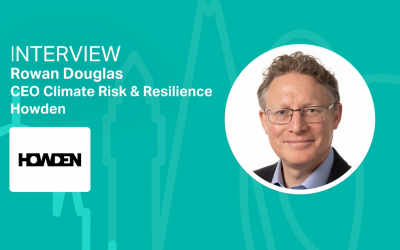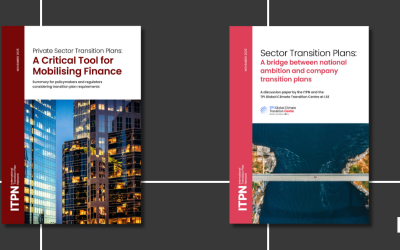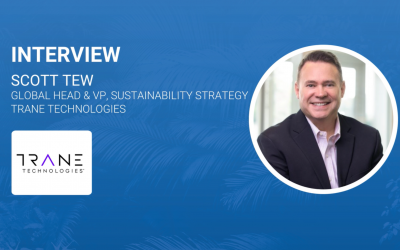Globalising green finance
Sir Roger Gifford, Chairman of the Green Finance Initiative, assures us that the two-degree ceiling is being taken seriously by the financial community, and shows how the City of London is promoting and developing the emerging green finance sector.
In a remarkably short period of time – the past year, especially – perceptions of climate-related finance have shifted profoundly. Clearly, this reorientation is by no means complete; we are yet to reach the trillion dollar investment target set by the IEA. But COP21, creation of the FSB Task Force on Climate-related Financial Disclosure, and China and the UK’s co-convening of the G20 Green Finance Study Group each marked a breakthrough in the sector’s development.
No longer are ‘green’ projects considered a form of 21st century tribute, or restricted to a corporation’s CSR programme. Instead, the capital required to meet or even beat the two-degree ceiling is increasingly being seen as an investment rather than a cost – and one split voluntarily between the private and public sectors. Because despite growing calls for fiscal stimulus and the state-led commitments of the Paris Agreement, the trillions required are far beyond the capacity of taxpayers. Even the People’s Bank of China, custodian of the world’s largest sovereign reserves, has admitted that private investors must finance 85 per cent of the country’s environmental projects.
Mobilising green capital is thus a political, regulatory and industry priority worldwide. Such efforts are not beginning from scratch, though. Rather, they are seeking to further scale and strengthen one of the financial sector’s fastest growing and most vibrant sectors: green finance.
Green and growing
The concept itself is simple. Green finance can fund any means of reducing carbon emissions or raising resource efficiency, and its adherents range from world-renowned corporates like Apple and Unilever to cities, states and international development banks. And it is growing rapidly across the full breadth of the financial and professional services sector. Green bonds, for example, were first issued in 2007, and sold not because of political pressure or public subsidy but due to rising demand for high-quality, low-carbon assets. They have generated record-breaking issuance volumes since, are worth in excess of US$150 billion globally and are coveted for their value as a hedge against carbon-related risks, as well as their reputation for transparency and integrity. And beyond green bonds and loans, green funds, indices and even crowd funding platforms are providing the tools to link political and societal conviction with investor demand.
These instruments benefit not only the environment but issuers too, typically broadening their investor base, maximising order books and tightening prices. Such was the demand for Transport for London’s inaugural green bond, for example, that the agency secured its second-lowest cost of debt capital yet and tapped an entirely new cash pool. Fully 69 per cent of the bond’s investors were green-only funds, many of them first-time investors not just in TfL but in sterling markets entirely.
This organic, bottom-up development is one of the sector’s great strengths. Issuers and investors worldwide are committing to best practices that incorporate product accreditation, transparency and regular reporting. Voluntary ‘green principles’, if you like, that ensure investor confidence in the environmental credentials of their holdings.

A range of vision
The sector’s growth has raised a natural question – what is green? The answer differs by geography, reflecting the fact that each nation’s journey toward carbon neutrality is bespoke and that, even domestically, one investor’s green parameters may differ from another’s. Many emerging markets are also operating on a longer time-frame for reducing emissions than, say, Europe – and even neighbours will disagree about the role of nuclear energy or the acceptability of clean coal. As long as the financial products facilitating this transition are transparent and properly accredited, however, investors can choose for themselves the assets that best suit their green mandate, and the market will price instruments accordingly.
With this approach, the green finance sector can retain its reputation for integrity, a reputation that will be ever more important as the market continues to attract retail investors and multilateral support. Indeed, the sector has so far developed both top-down and bottom-up, linking political conviction with the long-term concerns of institutional investors and the desire that exists within local communities to improve their immediate environs. Green products can therefore connect regional and domestic infrastructure needs (much if not all of which will require green provisions if the climate action plans, or INDCs, submitted in Paris are to be delivered) with a ready investor base. And the deal-flow this might generate is enormous; green issuance could encompass everything from UK housebuilding and Indian smart cities and the work of the self-labelled ‘lean, clean and green’ Asia Infrastructure Investment Bank.
The year of green finance
The City of London Corporation has a history of promoting and developing emerging sectors, from renminbi internationalisation to Islamic finance, fintech and international legal services. We are concerned with the interests of the whole financial industry, whether it is based in London or abroad, and believe passionately that green finance represents one of the sector’s best prospects. That is why, in January 2016, the City of London Corporation announced the creation of its Green Finance Initiative, which I am delighted to chair, and designated 2016 the ‘year of green finance’.
Developed in partnership with HM Treasury and what is now the Department for Business, Energy and Industrial Strategy, the Initiative pools international expertise and is intended to promote the sector’s development, strengthen market infrastructure and advocate specific regulatory and policy changes that might better channel funding toward green projects. The initiative has since convened a number of major forums with both international and domestic stakeholders, and is in the process of benchmarking the UK’s green financial flows and market sentiment; investigating climate-triggered product mechanisms; promoting and enhancing municipal authorities’ access to green finance; and convening a series of green workshops. We intend to better quantify the market’s challenges and opportunities, address them and enhance the sector’s development globally.
Scaling up the sector, of course, is the market’s challenge, and is a key topic of discussion here at Marrakech. But the two-degree ceiling is being taken seriously, and financiers worldwide are positioned to undertake the heavy lifting necessary to meet or even beat it.
Read the full Climate Action 2016/17 Publication here








